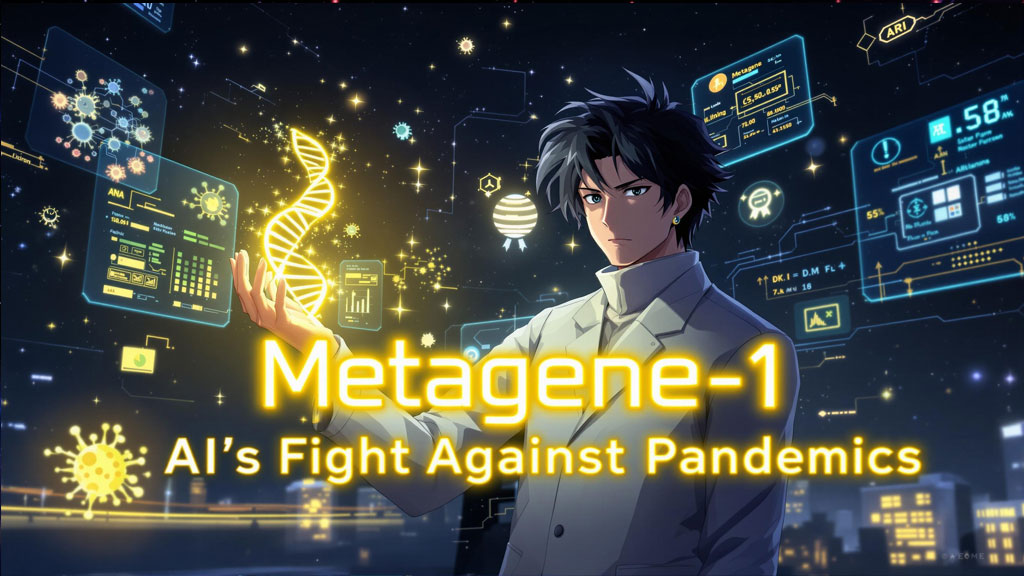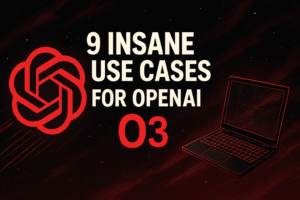Artificial Intelligence (AI) has been making waves across industries, from automating mundane tasks to solving complex problems. However, amidst the race to develop advanced AI systems, a critical question arises: how can we ensure these technologies are used for good? Enter Metagene-1, a groundbreaking AI model developed by Prime Intellect in collaboration with USC and the Nucleic Acid Observatory. This model is not just another AI innovation; it’s a potential game-changer in global health, designed to detect biological threats before they escalate into pandemics.
In a world where AI tools could be misused to create bioweapons, Metagene-1 offers a beacon of hope. By analyzing trillions of DNA and RNA fragments from wastewater, this AI-powered system provides an early warning mechanism for emerging pathogens. But how does it work, and why is it so crucial in today’s rapidly evolving technological landscape? Let’s dive deeper into the science and implications of Metagene-1.
Related Reading: OpenAI Orion: Navigating AI Future
Explore More: Microsoft Co-Pilot Studio: AI Agents Transforming Workplace
The Science Behind Metagene-1
Wastewater Sequencing: A Window into Public Health
Every drop of wastewater carries a treasure trove of genetic information—trillions of DNA and RNA fragments that tell the story of human and microbial health at a societal scale. Metagene-1 leverages this data to identify subtle genomic patterns, serving as an early warning system for potential health threats.
The process begins with wastewater sampling from various locations. These samples contain genetic material from bacteria, viruses, and even unknown species. Using deep metagenomic sequencing, the DNA and RNA are broken down into readable sequences. This data is then pre-processed using a method called byte pair encoding, creating a massive dataset of over 1.5 trillion base pairs.
The AI Model: A 7-Billion Parameter Powerhouse
Metagene-1 is powered by a 7-billion parameter Transformer architecture, a state-of-the-art AI model capable of analyzing entire microbiomes. This model excels in detecting anomalies and identifying pathogens, making it a critical tool for monitoring novel biological threats. Its ability to fill in missing genetic sequences further enhances its utility in understanding and preventing pandemics.
Learn More: Anthropic Computer Use Demo: Claude AI Beginner’s Guide
Related: How to Use NotebookLM Podcast: Beginner’s Guide 2024
Why Metagene-1 Matters
Addressing the Risks of AI Misuse
While AI has the potential to revolutionize industries, it also poses significant risks. One of the most alarming possibilities is the misuse of AI to create bioweapons. OpenAI has acknowledged these risks, noting that advanced models could assist bad actors in operational planning for biological threats. However, tools like Metagene-1 aim to counteract these dangers by focusing on prevention rather than cure.
A Step Toward Global Safety
Metagene-1 represents a proactive approach to safeguarding humanity in the age of exponential biology. By open-sourcing this technology, Prime Intellect and its collaborators hope to inspire other researchers and companies to prioritize safety and innovation. This aligns with the broader goal of creating a “race to the top” in AI safety.
Explore: Inflection AI Billion Fundraising
Discover: Bolt New Fork: Revolutionizes AI-Powered Full-Stack Development
The Broader Implications of Metagene-1
Democratizing Access to Biotechnology
A study by MIT highlighted the dual-use nature of large language models (LLMs), which can democratize access to biotechnology but also pose risks. For instance, non-experts were able to use chatbots to identify potential pandemic pathogens and protocols for their synthesis. This underscores the importance of models like Metagene-1, which focus on prevention and safety.
The Need for Nonproliferation Measures
To mitigate risks, experts recommend measures such as pre-release evaluations of AI models, creating training datasets that exclude harmful concepts, and screening DNA generated by synthesis providers. These steps are crucial for ensuring that advanced AI technologies are not misused.
Related Reading: Why You Should Start Digital Content Marketing
Check Out: AI in OnlyFans Content Marketing
Challenges and the Road Ahead
Balancing Innovation and Safety
As AI models become more advanced, the challenge lies in balancing innovation with safety. For instance, highly specialized models like OpenAI’s 01 series are incredibly powerful but also pose significant risks. Ensuring that these models are not misused requires a combination of technical safeguards and regulatory measures.
The Future of AI in Public Health
Looking ahead, the role of AI in public health is set to expand. From monitoring wastewater for pathogens to developing personalized medicine, the possibilities are endless. However, the success of these initiatives will depend on collaboration between researchers, policymakers, and industry leaders.
Explore: Twitch is Dying: How to Save Twitch
Learn More: How to Do Local Marketing with TikTok
Conclusion
Metagene-1 is more than just an AI model; it’s a testament to the potential of technology to address some of humanity’s most pressing challenges. By focusing on early detection and prevention, this groundbreaking system offers a glimpse into a future where pandemics can be stopped before they start.
However, the journey is far from over. As AI continues to evolve, so do the risks and opportunities it presents. The key lies in fostering a culture of safety and innovation, ensuring that these powerful tools are used to benefit humanity.
What are your thoughts on the role of AI in public health? Share your insights in the comments below!
Further Reading: OpenAI Canvas: Coding AI Marketing
Discover: How to Play Minecraft Using Oasis AI







